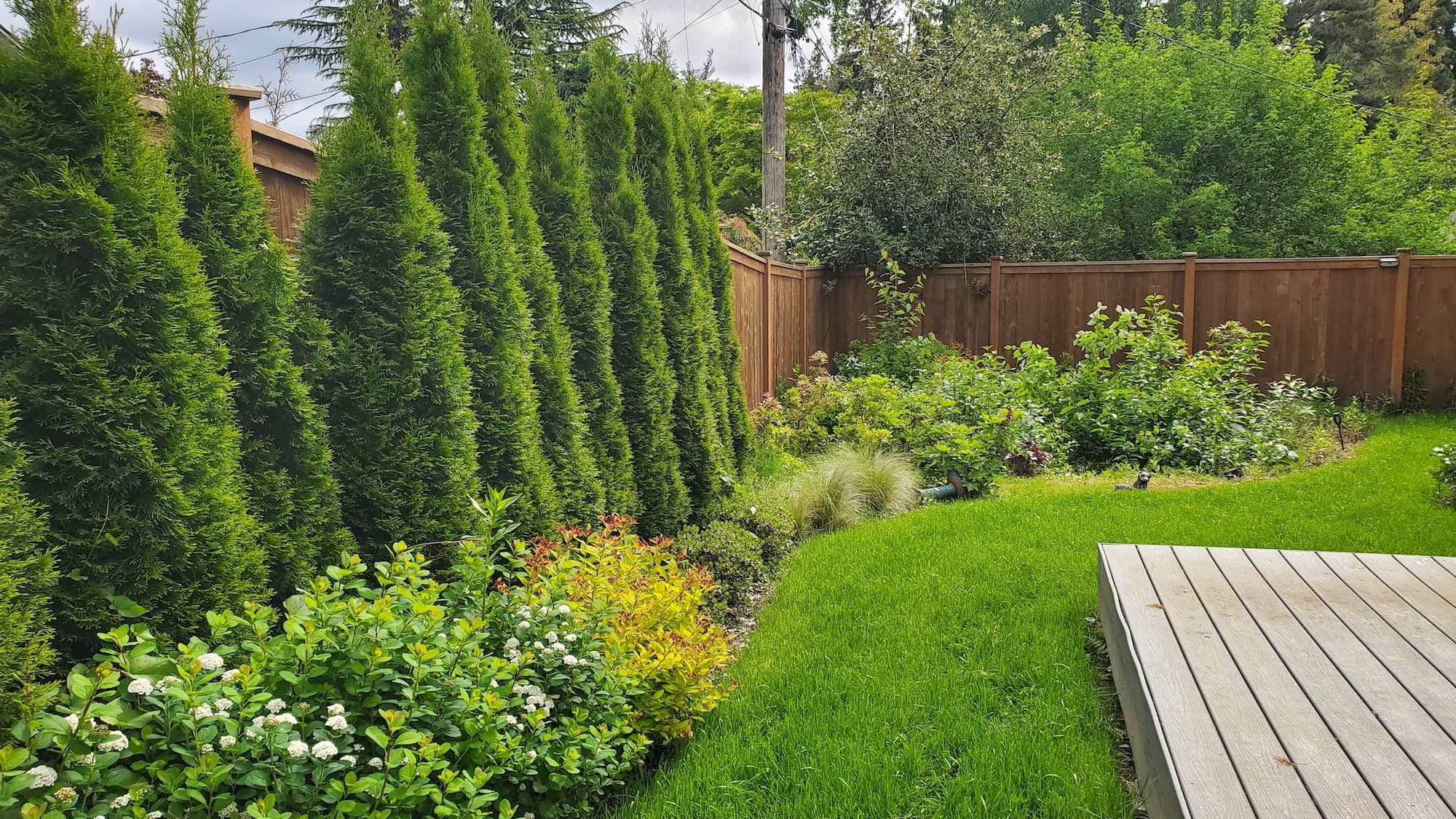West Seattle Remove ivy from fences
Homeowner’s Issue
Ivy thrives in West Seattle’s damp, mild climate. Winters bring steady rain and little frost, which keeps vinca, English ivy, and similar vines actively growing from fall through spring. Many properties near Lincoln Park, Alki Beach, and the Admiral district sit on shady slopes or compact glacial soils that retain moisture; vines use fences as a support and hold moisture against wood, speeding rot and warping. South- and west-facing fences get more sun and dry out faster, but north-facing and alley-side fences rarely fully dry, so moss and ivy colonize quickly.
Slopes and poor drainage are common here—runoff from upland yards funnels against fence lines, encouraging deep-rooted ivy to anchor and pull boards apart. HOA rules around Alaska Junction and the Junction district often require tidy fence lines; overgrown ivy can trigger repair notices. Seattle’s seasonal watering restrictions and an emphasis on sustainable maintenance mean homeowners prefer long-term fixes that don’t rely on chemical treatments. In short: left unchecked, ivy costs you fence life, visibility, and curb appeal. Manual, repeat removal plus soil and drainage adjustments are the reliable West Seattle solution.
Our Quality Service
We remove ivy by hand and with low-impact tools—pruning saws, loppers, root digging tools, and biodegradable smothering materials when needed. We cut and pull vines from the fence, dig out root crowns, and clean the base so regrowth is slow. If a fence is damaged by heavy vines we’ll flag repair needs and can prep boards for staining or replacement.
Timelines: most single-fence jobs finish in half a day to a full day; dense, multi-property jobs may take 1–2 days. We book seasonally to avoid the wettest weeks; summer and early fall give the cleanest removal and fastest drying. We use no herbicides—only mechanical removal, mulching, and barriers—aligned with Seattle’s sustainability expectations.
Benefits: reduces rot, improves sight lines and safety, raises curb appeal, and lowers recurring maintenance by removing root systems and improving drainage.
What’s Included
- Site assessment and scope: fence length, vine depth, access issues.
- Manual vine cutting and peeling from fence surfaces.
- Root crown excavation where practical to slow regrowth.
- Clean-up and green-waste haul-away or placement in your City green bin (your choice).
- Fence line edging and optional light mulching.
Options / upgrades:
- Heavy-duty smothering (cardboard + mulch) for stubborn patches.
- Native replanting suggestions (low groundcovers that won’t climb).
- Fence inspection and prep for staining/painting.
- Periodic follow-up visits (quarterly or bi-monthly) for regrowth control.
Before & After / Expectations
Expect noise from cutting tools and hauling, and a temporary mess while vines are being pulled. If vines are fully interwoven with boards, some boards may need removal to clear roots—this will be communicated before major work. After removal the fence will likely look bare initially; allow 2–6 months to monitor and remove any resprouts from remaining roots.
Timing tips for West Seattle: schedule work in late summer to early fall when vines are dry and easier to pull. Avoid major removal during continuous rain—wet vines are heavier and more damaging to wood. Watering advice: if you plant replacements, water in the morning and follow Seattle’s seasonal restrictions. Watch for spring regrowth after wetter months; that’s when follow-up pull sessions are most effective.
FAQs (3–5)
Q: Will the ivy come back?
A: Possibly. We remove root crowns to slow regrowth and offer repeat follow-ups; persistent patches need staged smothering and monitoring.Q: Do you use herbicides?
A: No. We use mechanical removal, smothering, mulching, and replanting—no chemical treatments.Q: How long will the project take for a 50 ft fence?
A: Typically a half- to full-day, depending on vine density and access from alleys or tight yards.Q: Can you dispose of the green waste?
A: Yes—haul-away is included, or we can leave material neatly in your City green bin if you prefer.Q: Will this damage my fence?
A: We aim to minimize damage. Severely integrated vines may reveal existing rot or loosen boards; we flag repairs and can prep the fence for a contractor.
Call to Action
If your West Seattle fence is losing the battle with ivy, book a no-obligation estimate. We schedule quickly, work sustainably, and focus on durable fixes that respect local rules and neighbors. Email neatandtidyseattle@gmail.com to get started—same-day photo estimates often available. Licensed • Bonded • Insured.
📧 neatandtidyseattle@gmail.com
📞 206-538-9344
Mon–Sun: 9am–6pm










